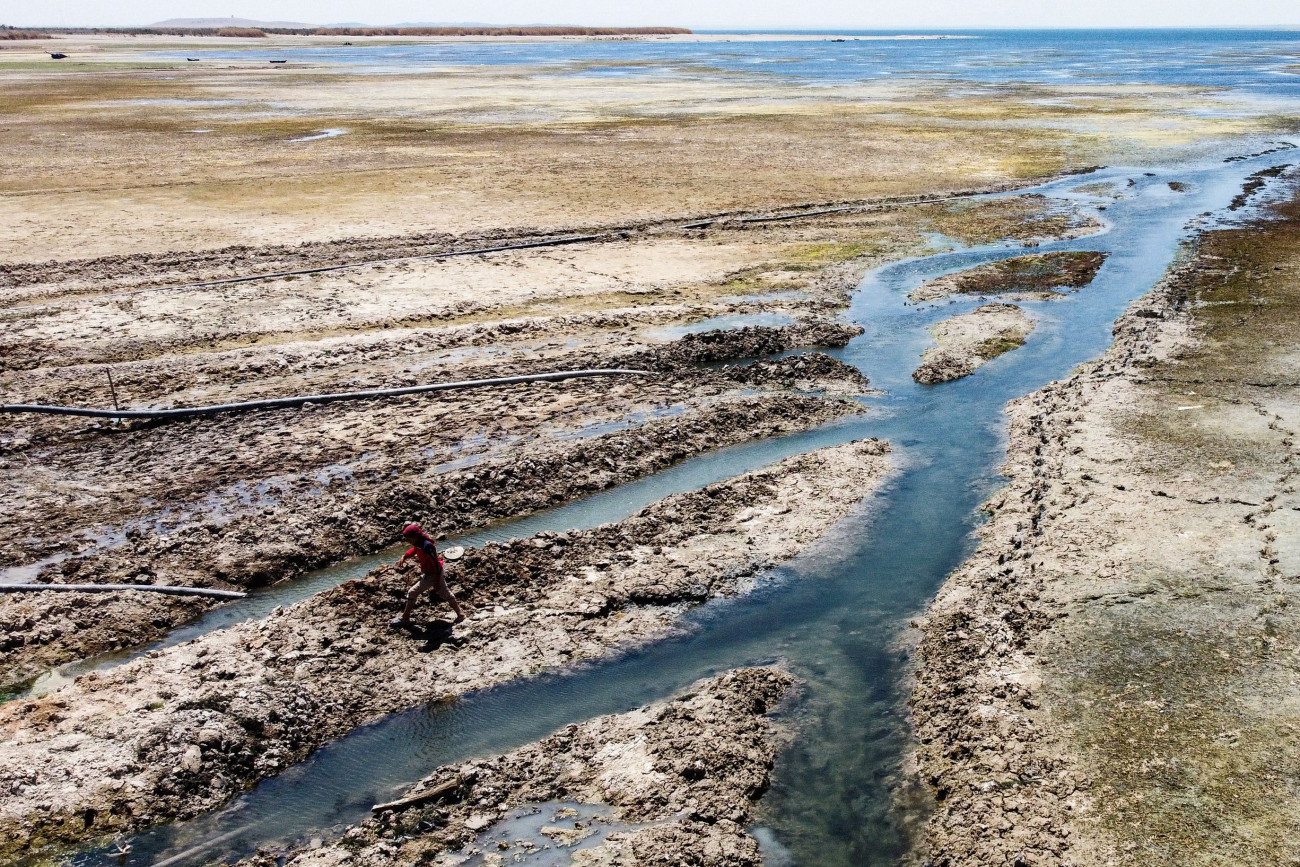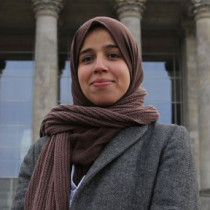

Introduction
Water resources are a key component of global sustainability, especially in light of the mounting environmental challenges posed by climate change. Thus, the importance of ensuring access to sufficient, safe freshwater is routinely emphasized by several international water-themed events, including the United Nations’ World Water Day and Arab Water Week.
When it comes to climate-related vulnerabilities, countries in the Middle East and North Africa region are exceptionally prone to risks associated with water reliability and security. These risks include tensions over transboundary water sharing between riparian countries, the push and pull between urban and rural areas over water use, the accelerated depletion of non-renewable freshwater supplies, the vulnerability to external threats of water infrastructure and delivery systems, and the delicate balance of meeting the competing demands within the water-food-energy nexus. However, with sufficient planning, funding, and implementation, challenges to regional water security can be addressed and mitigated.
We asked some of MEI’s Climate and Water Program scholars to share their perspective on strategies and opportunities that could most readily alleviate the region’s water security concerns.
Photo by Muhammed Said/Anadolu Agency via Getty Images
Viewpoints
-
Megan Ferrando
Megan Ferrando

Making space for the environmental and social value of water
The United Nations is hosting the U.N. Water Conference in New York this week — the first such conference in nearly 50 years. One important item on the agenda will be Valuing Water, an international initiative launched in 2016 that aims to inspire a paradigm shift in the way our societies interact with water.
Until now, policymakers and the private sector have primarily approached water from a traditional economic perspective, focusing on the economic value of water and the risks and opportunities of generating profit. This is a very narrow understanding of the value of water, one which often prioritizes economic and political interests over social and environmental needs, impeding sustainable development and accentuating inequalities.
We are fast reaching and exceeding the environmental limits of our planet and depleting our resources, making a broader understanding of water and its diverse environmental, social, and cultural values necessary. This means that water should be valued, protected, used, and priced differently when it is an input to economic activities, such as industry, agriculture, and employment; when it is a service, such as drinking water provision; when it sustains natural habitats; and when it has a cultural and spiritual purpose. Only understanding water through the current economic prism is too limited and contributes to its mismanagement.
Instead, the Valuing Water paradigm shift advises that decision-makers design policies that are long-term, cross-sectoral, and in the interest of the whole of society. For example, when expanding agricultural land or approving industrial complexes, policymakers should not only consider the economic benefit of the project, but should also assess, with the same weight, the potential opportunities and risks for water use efficiency, biodiversity, equitable water allocation, and the consequences for vulnerable groups in society. Such an inclusive, long-term, and society-wide approach to water management is key to achieving sustainable development, combating the climate and environmental crises, and ensuring economic security. Although it sounds evident in theory, this broader approach is severely lacking in policy planning and economic investment in practice.
One of the aims of the U.N. Water Conference is to mobilize political and financial commitments by both private and public sector actors to encourage a paradigm shift in the way we value water. As the world’s most water-scarce region, MENA has much to gain from such a shift. Across the region, scarce and poorly managed water resources cause environmental degradation and food insecurity, affect jobs, worsen social inequalities, and make societies less resilient to climate shocks like floods, droughts, and fires. Tensions over scarce resources, mismanagement, and inequitable water allocation can often further destabilize already conflict-prone contexts.
The well-being of people, economies, and the environment are tightly intertwined, and they all depend on the sustainable management of water. The U.N. Water Conference will hopefully be a step in the right direction toward better valuing this balance.
Megan Ferrando is a Non-Resident Scholar with the Climate and Water Program at the Middle East Institute. She is currently based in Lebanon supporting the work of development cooperation NGO WeWorld-GVC, among others, on projects related to sustainable water management.
-
Orestes Morfín
Orestes Morfín

Transboundary resource exchange agreements: A tool for water dispute resolution
Maps are arbitrary. Dictated by conquest, treaty, or fluke of history, they are seldom if ever drawn to reflect a population’s dependence on the natural world.
Natural resources such as surface water and groundwater may cross borders freely, yet people and money may not. Since economies may be radically different between neighbors, borders are often an impediment to the cooperation of nations with mutual interests in the health of shared natural systems. If the increased importance of water in a rapidly changing climate does not compel us to rethink such boundaries, perhaps mutual concern for water as a shared resource can be incentivized across them.
Resource exchange agreements between nations sharing a watershed could serve as a type of water dispute resolution. This could take the form of water-for-energy-storage agreements, or water-for-goods agreements. An arid downstream stakeholder with ample solar generation capacity and power storage challenges, for example, might be able to negotiate the release of water or power from an upstream stakeholder’s reservoir in exchange for equivalent solar power use at a mutually agreeable time of day. Similarly, a downstream, primarily agricultural stakeholder might be able to enter into water- or power-for-food exchange agreements with an upstream reservoir operator that has very little arable land.
The objective would be the creation of legal instruments that refocus policy, whether by treaty or multinational economic pact, on shared socioeconomic benefit centered around the health of the resource. Stakeholders would be incentivized to merge socioeconomic interests across borders according to natural features.
Management by basin, instead of by state, is not a new idea: John Wesley Powell put the idea forth in his 1890 speech to the U.S. Senate Select Committee on Irrigation and Reclamation of Arid Lands. A more current example, the Nile River Basin Initiative, is a regional partnership among riparian states in Africa designed to foster cooperative development, advance sustainable socioeconomic benefit, and enhance peace and water resource security.
Coordinated efforts among states might include the reimagining of state water departments and/or water providers as one cohesive entity by basin. Engaging state environmental departments in the same manner would complement this process, as would the creation of economic zones dependent on the resource within the basin. The coordinated interests of these entities could facilitate the preservation of shared surface and groundwater resources while stimulating economic engagement between stakeholders.
Apart from serving to align economic interests and environmental concerns, such agreements could lead to shared risk, minimizing the likelihood of damage to the resource and associated infrastructure. They could also unify water security priorities across international lines and encourage shared financial responsibility for infrastructure. Since an administrative framework for cooperation would already be in place, response times and logistical confusion in the event of crisis could be reduced.
Resistance to changing a relationship advantageous to one party (hydro-hegemony), while difficult, is not insurmountable. In addition, balancing the economic and health and safety interests of the municipal/industrial and agricultural sectors (even within states) is challenging. Finally, financial responsibility for both existing infrastructure (e.g., repayment obligations) and/or new infrastructure, as well as potential standards for new investors if stakeholders are unable to cover costs, will need to be codified.
Orestes Morfín is a senior planning analyst with the Central Arizona Water Conservation District and a Non-Resident Scholar with MEI’s Climate and Water Program.
-
Gökçe Şencan
Gökçe Şencan

Three ways to bolster the MENA region’s water resilience
Middle East is emerging as a climate change hotspot, and the Mediterranean basin at large is warming twice as fast as the global average. At this rate of warming, water scarcity, already a major problem in the region, will only intensify and challenge the existing water and food systems. One way these challenges will manifest themselves is the overall trend of shrinking snowpack and declining water flows in the region’s river systems, including the Tigris-Euphrates. Many parts of the region also suffer from groundwater depletion following a severe drought in the mid-2000s, further limiting water availability for millions whose lives and livelihoods depend on this precious resource. This growing water scarcity harms local economies and heightens conflict risks.
While the Middle East’s climate and water future looks depressing, there are various promising solutions to counter climate change. The first option is to invest in water reuse technologies like wastewater recycling. Less than half of wastewater in the region is even collected, and of the collected wastewater, only a small fraction is treated and reused; most of it is released to the environment untreated. Investing more in wastewater collection and reuse could not only help build water supply resilience but also deliver other benefits like alleviating environmental pollution and its dangers to human health and ecosystems.
The second option is groundwater recharge. As much as climate trends in the Middle East point to a progressively drier future, there will still be exceptionally wet years. Some parts of the region even face an increased risk of extreme rain events and flash floods. While flood events can pose serious dangers, they can also provide opportunities to replenish depleted groundwater reserves. For example, with more investment in conveyance infrastructure, floodwaters could be directed to spreading grounds or fallow farmlands that are most suitable for groundwater recharge. Investments in water recycling could also be coupled with groundwater projects to store excess recycled water underground. Groundwater recharge initiatives from California could provide further insight into operating and managing such projects.
The third option, reducing demand, is an often cheaper and less technology-dependent solution. For example, repairing leaks in water infrastructure could result in significant water savings. Government incentives could aid demand management efforts by encouraging farmers to switch to less water-intensive crops or fallow their lands, implement more efficient irrigation methods, and repair or improve their water infrastructure. In response to growing water demand in cities, governments could update building codes to require water efficiency standards in new and remodeled buildings.
While the MENA region’s climate prospects look grim, timely investments in multi-benefit solutions like water recycling, groundwater recharge, and demand management will greatly help the region prepare for the expected changes in climate and bolster its water resilience. This process of building resilience will require careful planning, significant resources, and steady sources of funding — but the reward of a more water-resilient Middle East will be well worth it.
Gökçe Şencan is a research associate at the Public Policy Institute of California's (PPIC) Water Policy Center and a Non-Resident Scholar at the Middle East Institute’s Climate and Water Program.
-
Malak Altaeb
Malak Altaeb

Greater adoption of decentralized water treatment systems needed
Warming average global temperatures exacerbate water shortages in water-poor areas, thus increasing the risk of drought and crop failures. About 60% of the MENA region’s population already lives in high water-stressed areas. Thus, to adapt to shifts in weather patterns and the growing challenges imposed by climate change, new water conservation tools must be made available and implemented to reduce the mounting stresses on vulnerable communities. It is important to consider climate change as an opportunity and not strictly a threat. For example, water-related challenges should be seen as an opportunity to develop stronger water systems that can help reduce demand pressure on groundwater aquifers and allow for the diversification of non-conventional water sources. Such rethinking and reorganization would be particularly impactful in MENA, which depends heavily on groundwater resources for domestic, agriculture, and industry use.
One of the key solutions that could be more readily adopted and expanded by many countries in the region is the employment of decentralized water treatment systems for agriculture, as MENA uses 75-90% of its water resources for highly demanding farming and crop irrigation. Decentralized wastewater treatment systems are small-scale and low-cost systems that collect, treat, and discharge wastewater directly from the supply source. These systems can work in rural and suburban areas with smaller populations. They provide effective treatment while mitigating pollution and potential health risks associated with wastewater when managed and maintained correctly.
Such models already have a track record in the region, such as in Egypt and Jordan, contributing to the integrated management of non-conventional water resources. This means they can also be used in other countries to enhance sanitation and diversify irrigation sources to strengthen food security across the region.
That said, decentralized water treatment systems also create some challenges of their own because of the risks posed by local mismanagement or the inadequate removal of nutrients and emerging pollutants. In addition, more will need to be done to increase environmental education and awareness among citizens to boost popular acceptance of water reusability from decentralized systems.
Malak Altaeb is a Non-Resident Scholar with MEI’s Climate and Water Program and an independent consultant, writer, and researcher based in Paris, France.
-
Andrei Covatariu
Andrei Covatariu

Easing the growing tension within the water-energy nexus
In recent decades, tension within the water-energy nexus has intensified across the world. As the need for electricity surged, demand for water used in generation — in hydropower plants, but also for cooling purposes in thermal power plants — has led to challenges in various geographical areas. Just last year, as a result of prolonged droughts, Europe faced reductions and shutdowns in energy generation, presenting further complications for the already challenged energy production sector. For its part, the Middle East faces exceptional water-related challenges, with some Gulf states expecting high depletion rates for existing freshwater sources, thus endangering the current water-energy equilibrium in the electricity generation sector.
A fast(er) paced deployment of renewables technologies would go a long way toward increasing water security. Technologies like photovoltaic panels and wind turbines require virtually no water to function properly and deploying them would help to phase out water-intensive energy generation facilities. However, as this transition will take time, one intermediate solution would be to upgrade existing facilities, with an eye to reducing the amount of water used per unit of electricity generated. Enhancing efficiency at the consumption level is another solution, as measures to reduce per capita energy consumption would translate into lower energy demand and thus lower water consumption.
Across the Gulf region desalination accounts for between 5% and 12% of total electricity consumption. A revised policy framework and better planning on the part of local authorities to improve the efficiency of individual water use (including a circular approach to consumption) and boost technological innovation in the agricultural sector are viable options to reduce high energy supply needs. This will, in turn, reduce the pressure on water sources linked to energy production, increasing the level of water security.
Careful strategic planning will also be needed when it comes to future hydrogen production facilities in the region, as they require significant water volumes at steady flows. As the Middle East aims to be a global leader in hydrogen production, finding the right location for these facilities could make or break the water security of some areas. Poor planning might increase existing pressure on local communities and agriculture, while creating new tension points in regions that are currently relatively water stable. Identifying the appropriate locations for hydrogen production — which will need to provide both a regular energy supply and consistent flow of water (without affecting the social and economic stability of nearby communities) — is a vital prerequisite for realizing the MENA region’s long-term hydrogen plans.
Andrei Covatariu is a co-founder of ECERA (Ecological Economics Research for Action), a network of practitioners aiming to produce policy-relevant knowledge on the various facets of sustainability. He is also a Non-Resident Scholar with MEI’s Climate and Water Program.
-
Youssef Wehbe
Youssef Wehbe

Rethinking rainfall: Untapped resource for the MENA region
Historically, rainfall enhancement has been overlooked as a key component of water security and sustainability. The United Arab Emirates has been a regional pioneer in the application of cloud seeding technology and has been chosen to host the U.N. Climate Change Conference (28th Conference of the Parties, COP28) event later this year, providing a significant opportunity for the Gulf Cooperation Council (GCC) to showcase its commitment to combating climate change and promoting sustainable development.
It is important to emphasize that rainfall enhancement technology should not be viewed as a substitute for other crucial components of water security, such as desalination and wastewater recycling and reuse. Instead, it should be considered a reliable complementary source of water, with specific applications in areas like targeted agriculture and managed aquifer recharge. By assuming a conservative annual rainfall rate of 80 millimeters for the UAE, and considering its surface area of 83,600 square kilometers, the average annual rainfall volume amounts to approximately 6.7 billion cubic meters (bcm). Using again conservative estimates of a 50% seeding rate for rain clouds and a 10% increase in surface rainfall due to seeding impacts, we can estimate that the volume of rainfall attributable to seeding is approximately 335 million cubic meters (mcm) per year. With this conservative estimate, seeded rainfall can meet 7.4% of the UAE’s annual average water demand of 4.5 bcm.
When it comes to costs, water tariffs in the UAE and other GCC countries are heavily subsidized and do not reflect actual production costs. The Dubai Electricity & Water Authority (DEWA) estimates a production cost of $0.31 per cubic meter from its most advanced Hassyan Sea Water Reverse Osmosis Plant. However, cloud seeding missions, according to the UAE National Center of Meteorology (NCM), cost up to $8,000 per flight hour, with 390 flights conducted in 2020, each with an average duration of one hour. When considering the aforementioned seeded rainfall volume of 335 mcm, the unit cost from seeding can be estimated at $0.01 per cubic meter — 30 times less than the unit production cost of desalination.
To harness the full potential of cloud seeding technology as a reliable and cost-effective source of renewable water, it is necessary to make parallel investments in rainwater harvesting and groundwater recharge systems, as well as improved transmission systems. This is analogous to the critical challenges being tackled for solar energy storage and transmission.
Dr. Youssef Wehbe is a Non-Resident Scholar with MEI’s Climate and Water Program and a program officer with the NCM.











